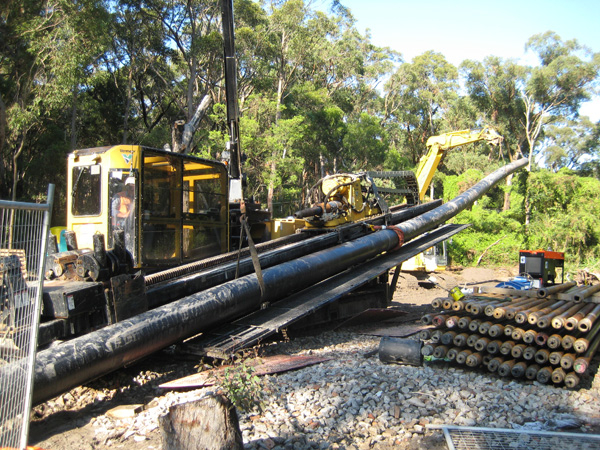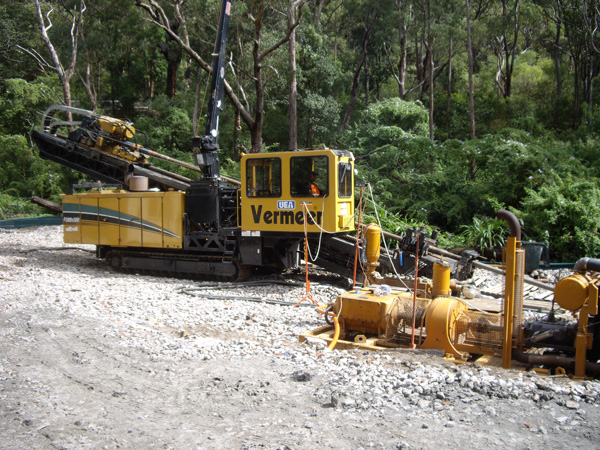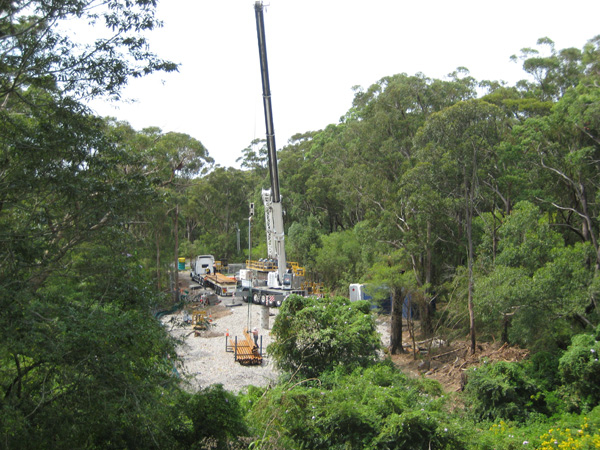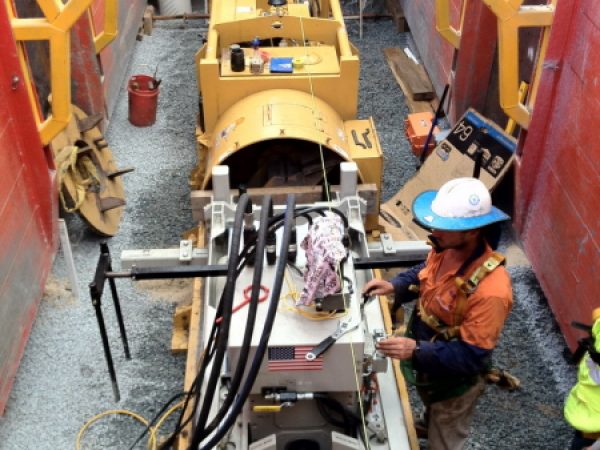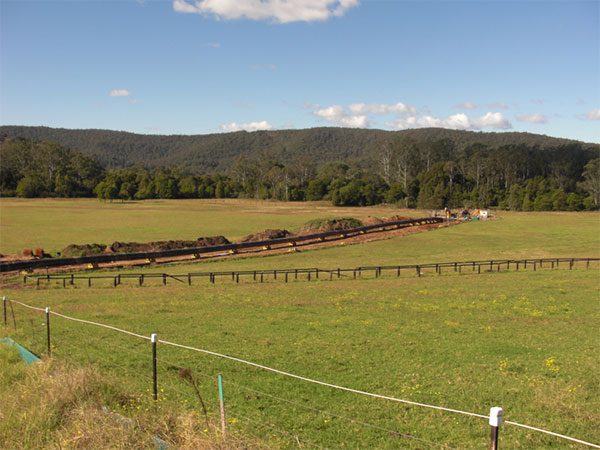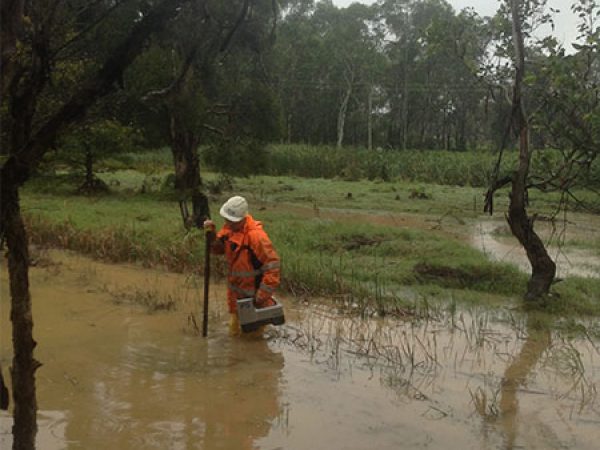Design
The new sewer enabled the removal of the Kahibah 1 pump station and reduced the wet weather overflow impacts on the environment. The bore was difficult due to site constraints of the state recreation area, limited access to the exit pit and bore line and exacting grade tolerances of -2%, with no zero or positive grade allowable. Grade complexity was further compounded by the varying geology, comprising of conglomerate sandstone, siltstone, mudstone and a fractured 2.5 metre thick, un-worked coal seam intersecting the bore path for 65 metres.
Construction
Once physical constraints were determined, works began to secure approval from the National Parks and Wildlife Service to allow for land clearing for the rig setup and excavation of the 4 metre square x 5 metre deep exit pit. Site preparation works began with the clearing of bushland to allow UEA’s maxi rig spread to be mobilised. Detailed survey works were undertaken to enable accurate tracking of the bore using the Vector Magnetics steering tool.
Due to the fractured coal seam and concerns over fluid loss, the team back-reamed the bore straight to size. PDC reamers enabled steady progression through the varying ground conditions, and a clear distinction between ground conditions was evident when pure black coal chips came off of the shaker screens. Once the bore hole was complete, conditioned pipe installation began. Due to the limited access to the exit pit, close proximity to Flaggy Creek and the location being within a popular national park, pipe installation was undertaken in a weld and push operation.
CHALLENGES & COMPLETION
The difficult ground conditions on this project provided some significant issues for the duration of the works. Working closely with drill mud suppliers was essential to manage this problem and deliver the project to scope and on time.

